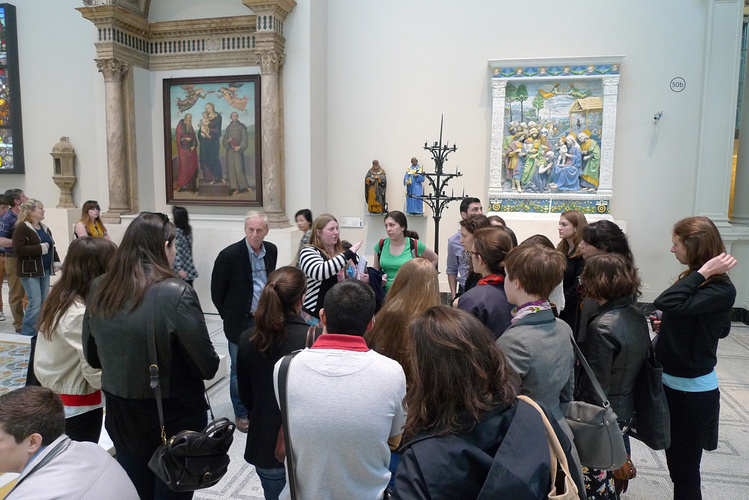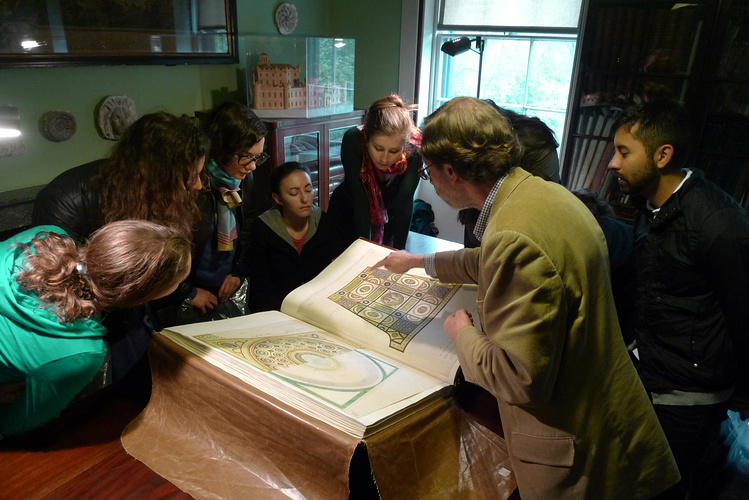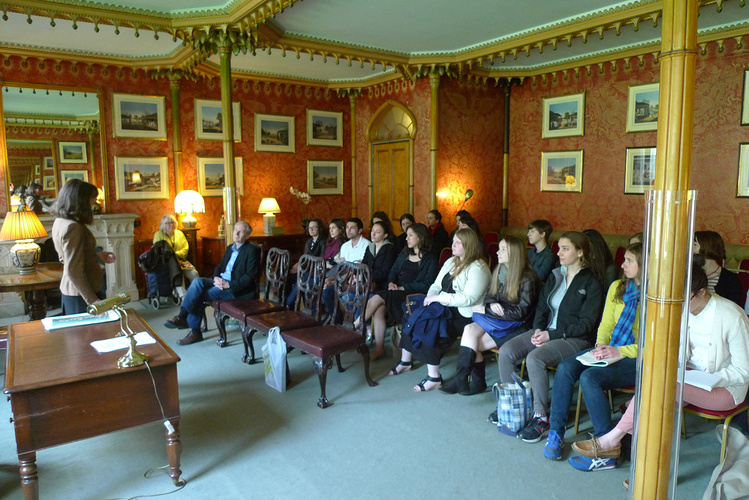Led by Professors Jeffrey Collins and Paul Stirton, eighteen students again headed to London for eight days of intensive on-site study as part of the Bard Travel Program, organized each May for rising second-year M.A. students. This year’s program was designed to introduce students to Britain’s great museums and historic houses while exploring diverse strategies for teaching with, and about, objects.
Our course began in the Victoria and Albert Museum’s new Dr. Susan Weber Gallery of Furniture, where curator Nick Humphrey explained the installation’s concept, design, and novel interactive technology. V&A Curator Tessa Murdoch then gave a behind-the-scenes introduction to her new exhibition, Treasures of the Royal Courts, investigating diplomatic and material exchanges between England’s Tudor and Stuart dynasties and the Russian Tsars. Our next day focused on the histories of private and public collecting, with seminars on eighteenth-century furniture and porcelain at the Wallace Collection (with curator Helen Jenkins), and the British Museum, where senior curator Ian Jenkins explained the genesis and organization of the innovative Enlightenment Gallery.
Our third day found us studying the urban interiors created for and by artists: Leighton House, a jewel of the Aesthetic movement; the Linley Sambourne House at 18 Stafford Terrace, an almost perfectly preserved late Victorian home; and the striking modernist family house of Hungarian-born architect Ernö Goldfinger in Hampstead. Our interest in the dynamics between homes and museums also took us to the Geffrye Museum, a former almshouse devoted to illustrating English middle-class life through a series of period rooms, and Sir John Soane’s evocative house/museum in Lincoln’s Inn Fields. Here, in addition to studying the structure and its contents, curator Stephen Astley offered us a seminar on the museum’s unparalleled collection of drawings for late eighteenth-century interiors and furnishings from the Adam workshop.
Our first excursion focused on “The Grand Tour Syndrome and the Suburban Villa,” beginning with Lord Burlington’s neo-Palladian villa at Chiswick, a showplace for the work of William Kent, where Julius Bryant, former chief curator of English Heritage, highlighted the challenges of refurnishing and restoring the early eighteenth-century house and garden. Dr. Adriano Aymonino, an Adam specialist, joined us at Syon House, where we explored the expressive use of antique and Italian decorative sources at a key moment of British Neoclassicism. A second day trip on “Regency Recreation” took us to the spectacular Royal Pavilion at Brighton, where curator Alexandra Loske focused on ongoing projects of preservation and interpretation of the historic fabric.
With these experiences under our belt, we returned to the V&A, where students analyzed selected artifacts and galleries throughout the building. Their final presentations demonstrated not just how much they had learned in their first year, but how far they had come as future scholars and professionals.



